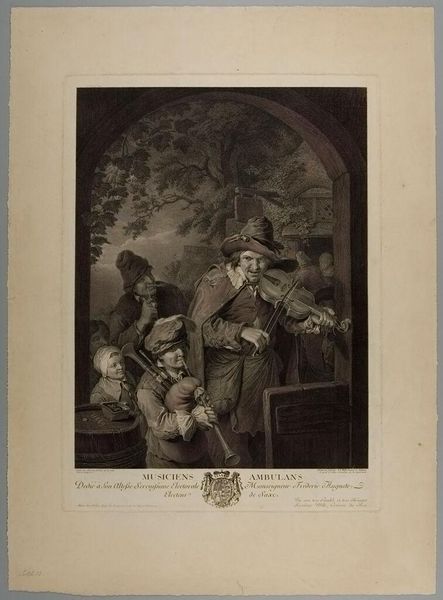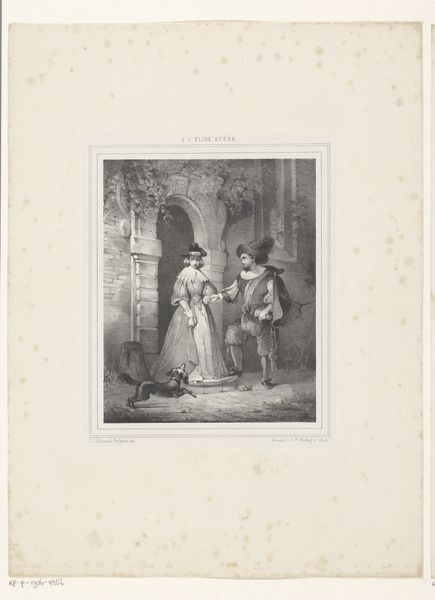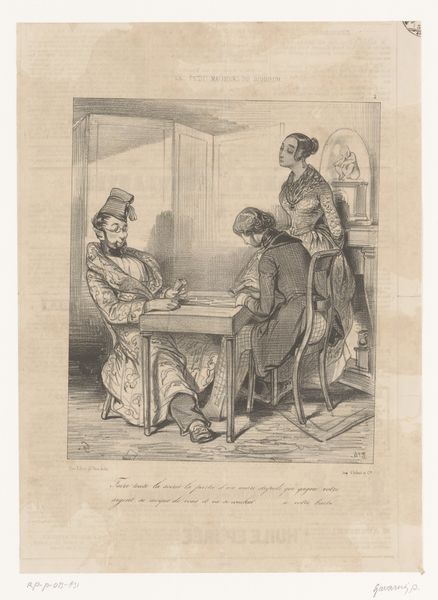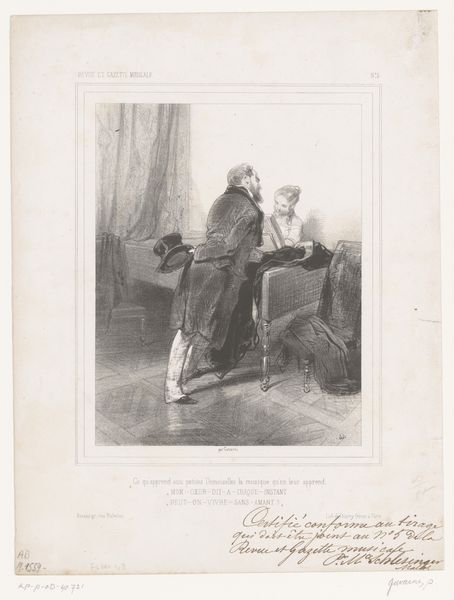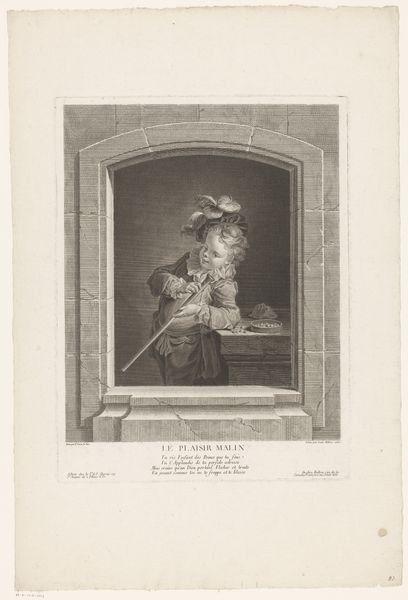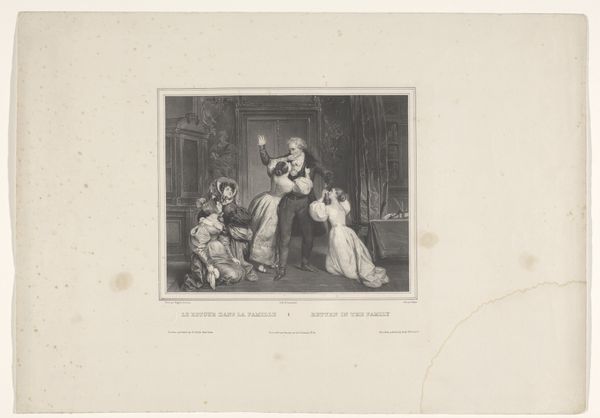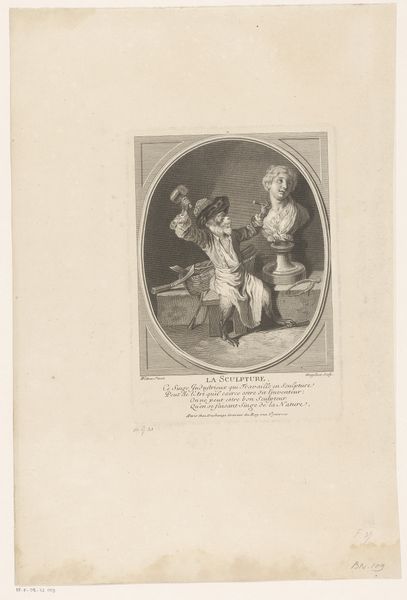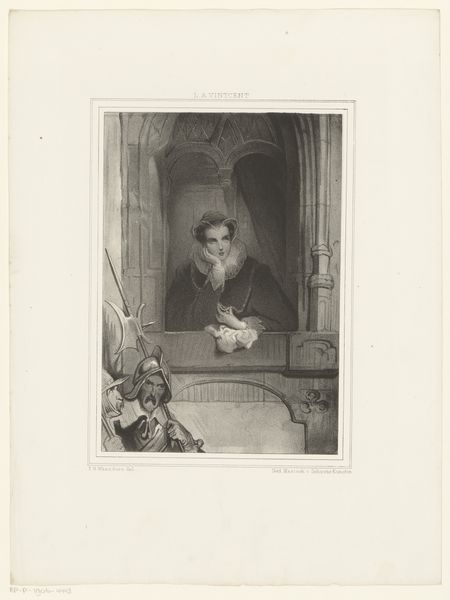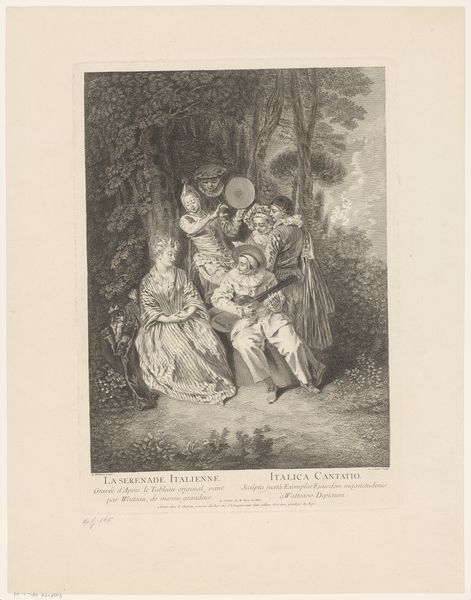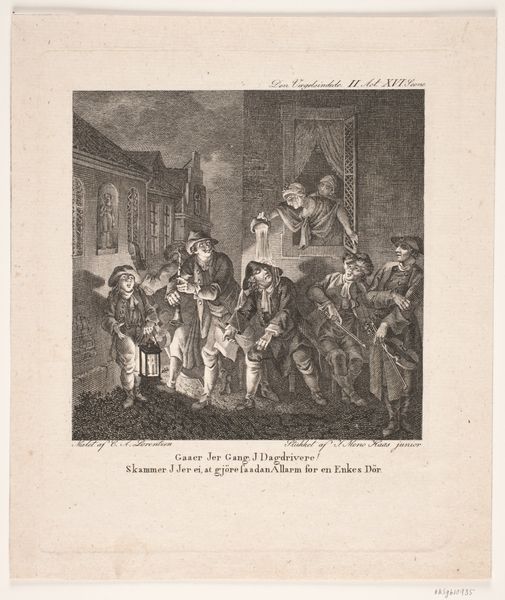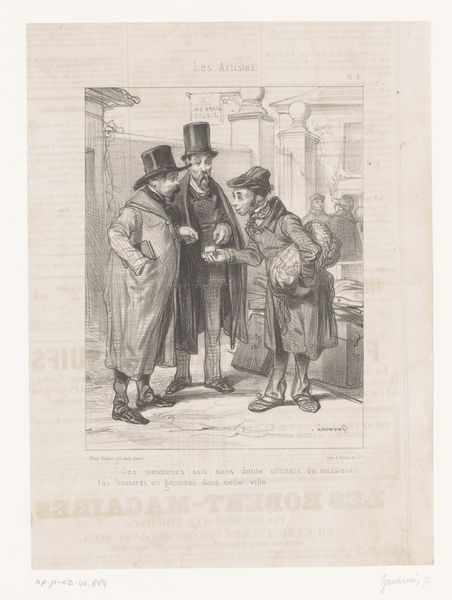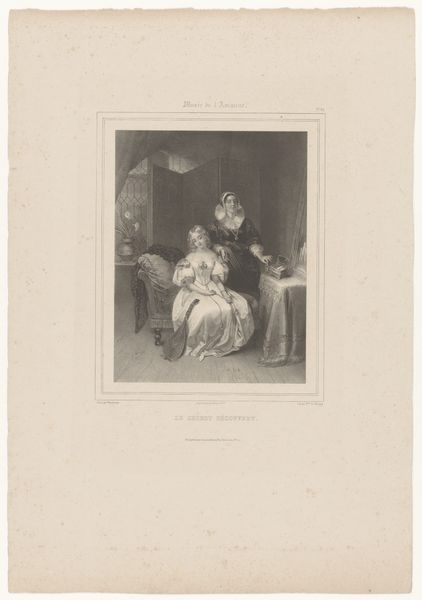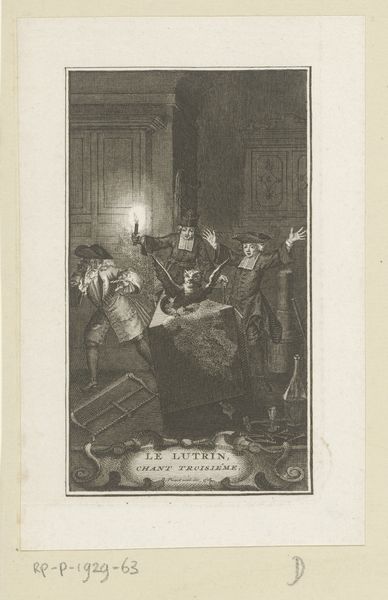
Dimensions: height 486 mm, width 352 mm
Copyright: Rijks Museum: Open Domain
Curator: This print, titled "Straatmuzikanten," or "Street Musicians," was created in 1764 by Johann Georg Wille. It employs both etching and engraving techniques to depict a small band of musicians, right? Editor: It does! And my initial reaction is to the palpable sense of raw, unvarnished humanity. These aren't idealized figures; they’re workers, their faces etched with the realities of their lives, their attire showing wear and tear. I’m immediately drawn to what this artwork might communicate about the economic disparity during the Baroque period. Curator: It's fascinating you focus on their rough-hewn nature. Look at the central fiddler's grin – almost manic. Does this resonate with familiar depictions of folk musicians throughout history? Is this an intentional echo, maybe touching upon deeper myths tied to music and peasantry? Editor: Potentially, but I’m cautious of romanticizing poverty. The “merry musician” archetype can often whitewash genuine struggles. What seems jovial could mask desperation, an act of performative labor dictated by socio-economic circumstances, you see? How does Wille use portraiture traditions to possibly subvert or even support those narratives? Curator: That's a great point. There's a visual language here. Consider how the clothing functions. The bagpiper, partially obscured, yet still dignified in worn garments; the fiddler's exposed teeth. Clothing identifies their position within a social hierarchy, an almost theatrical display of economic existence and the burdens and social mobility linked to music professions. Editor: Exactly. It prompts us to consider who’s consuming their music and what socio-political forces enabled it? What power structures does their performance indirectly support, you know? This reminds me of Gramsci’s writings on hegemony. Is their art contributing to the status quo even if unintentionally? I also notice other folks are gathering in the background. The music touches all. Curator: An excellent thought. Perhaps Wille wants to tell the stories of many strata of people with accessible art. This echoes throughout culture and even in current debates about the role of artists in society. It makes this etching far more than just a period genre scene; it's a relevant mirror reflecting society to itself across centuries. Editor: Yes, art like this print pushes us beyond simple aesthetic appreciation into interrogating social relations. Considering that "Straatmuzikanten" isn't just about what’s visible; it's a powerful comment on the invisible forces structuring daily life.
Comments
No comments
Be the first to comment and join the conversation on the ultimate creative platform.
